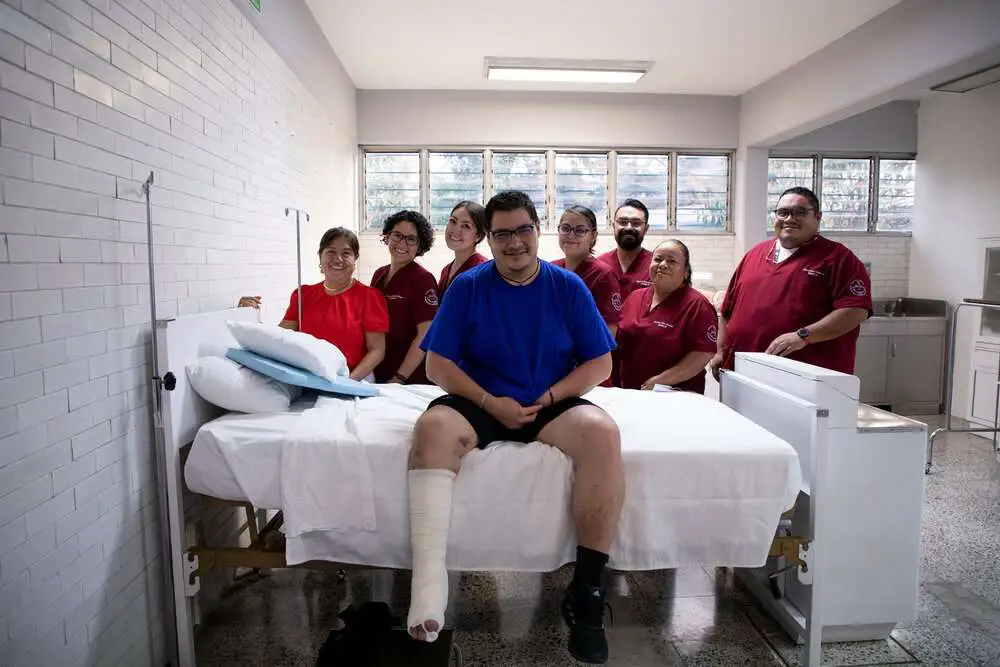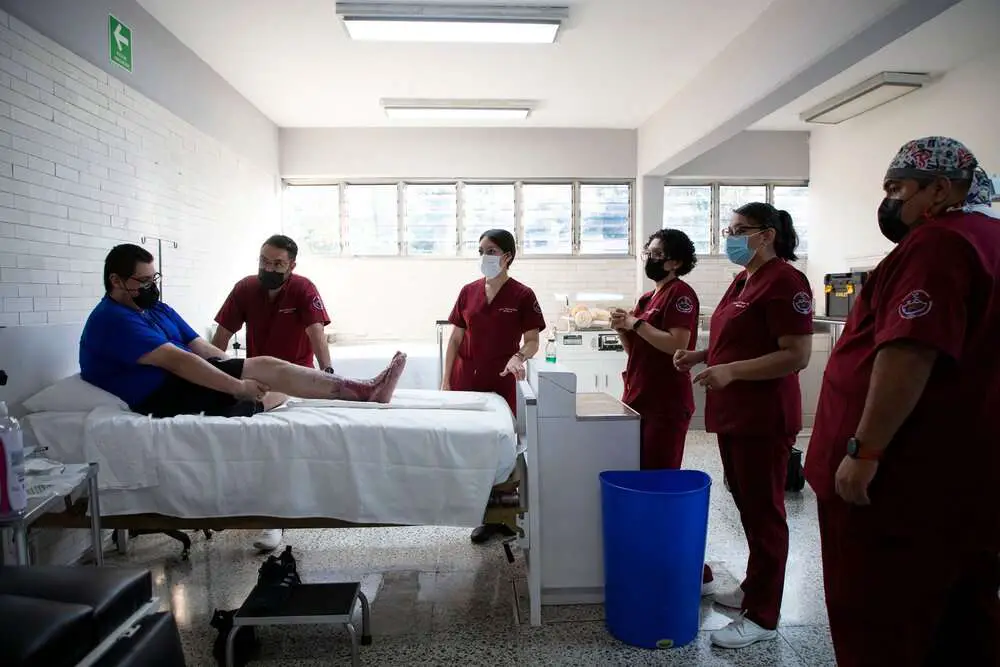A man was saved from having his leg amputated after boffins in Mexico grafted fish skin onto his foot.’

Ali Adali Prado Valladares, 35, recently underwent his sixth tilapia skin graft at the Faculty of Nursing of the Autonomous University of Queretaro (UAQ).
Ali had developed a foot problem through diabetes and risked needing his leg amputated.
But, said experts at UAQ, the skin graft may now save him from losing the limb.
Tilapia skin has non-infectious microbiota, a high level of moisture, and is mainly composed of collagen type 1, which is morphologically similar to human skin, a study by Melati Putri et al. showed earlier this year.
Tilapia are mainly freshwater fish inhabiting shallow streams, ponds, rivers, and lakes, and less commonly found living in brackish water.
Diabetes can reduce the blood supply to the feet and cause a loss of feeling. This means foot injuries do not heal well and can lead to ulcers and infections.
In a statement obtained by Newsflash, UAQ said (translated from the original Spanish): “Thanks to a revolutionary treatment based on tilapia skin grafting carried out by Alicia Barajas Pozos, researcher at the Faculty of Nursing (FEn) of the Autonomous University of Queretaro (UAQ), Ali Adali Prado Valladares, 35, got a second chance to recover from diabetic foot complications. Medical opinions pointed to the possible amputation of the leg. However, this treatment has given him and his family hope.
“Barajas Pozos affirmed that despite the fact that in countries like Brazil these treatments are authorised, in Mexico their effectiveness is still being investigated. However, through results observed in cases such as those of Ali, the advantages that it has are evident, as the collagen provided by the tilapia skin is type 1, which, among other things, relieves pain, protects nerve endings, and is cheap and easy to obtain.”
Barajas Pozos said: “Tilapia must be brought in as part of wound care, because we are doing it now, but we have to show that it works… What does tilapia give us? The collagen that we humans produce and that is why it is very successful.”
“In addition, the university professor stressed that, compared to other procedures, tilapia skin grafting has a minimal cost, if one takes into account that Ali and his family, for example, invested MXN 2,700 (GBP 120), compared to other grafts that can cost up to MXN 4,500 (GBP 190).

“Also, Barajas Pozos, who teaches the subject Comprehensive Approach to Patients with Wounds II, accompanied by Dessiree Martínez Botello, coordinator of the Master’s Degree in Advanced Clinical Management of Wounds, Stomas and Burns, celebrated that students of the first generation of this postgraduate programme were the ones who participated in the placement of this material, which will help them, she said, to train in these kinds of procedures.
“This was the sixth session in which Ali Adali underwent the grafting, which is carried out, in his case, every fortnight and which has shown a great improvement from when he was first treated – at the beginning of August – when the wound he presented was 33 centimetres long and 19 centimetres wide. In November it measured 17 long and only seven centimetres wide.
“For this reason, they intend to publish the results and take a step forward in the investigation of this graft in the country.
“Finally, Ali Adali commented that after resigning himself to losing his foot and finding out the diagnosis of leg amputation, he made the decision to opt for this treatment, which has improved his quality of life.”



